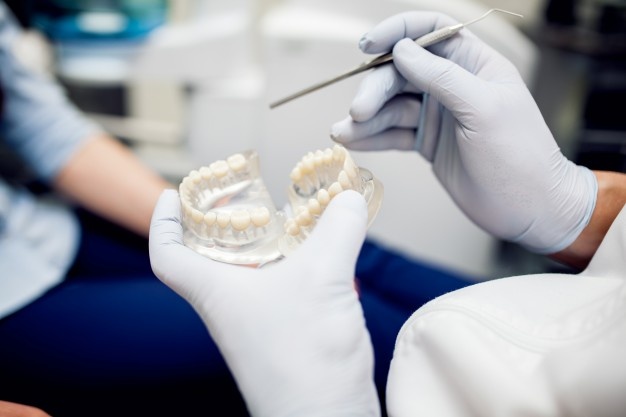Socket/Ridge Preservation
If your dentist is recommending tooth extraction, it may be because of:
- Trauma/Damage: a damaged or broken tooth beyond repair
- Tooth Decay: if your tooth has decayed to the point that it can no longer be treated with a filling, root canal, or crown
- Periodontal Disease: can cause your teeth to become loose/non-functional or infected
What Happens after an Extraction?
After a tooth extraction, the jawbone will no longer receive stimuli where the tooth once was, and cells called osteoclasts will begin to break down the jawbone. New bone will still form but at a slower rate than the bone that is being destroyed. Over time, the missing space can cause your other teeth to shift and can create complications due to spacing and/or inadequate bone if you decide to get a dental implant in the future.
What Is Socket Preservation?
Socket preservation is a bone grafting procedure to preserve the jawbone in the area where a tooth was extracted. This helps to minimize bone loss after an extraction and prepares the site for a future dental implant. The bone graft can be made of synthetic material, bone from other animals, or human bone. After Dr. Lam carefully removes your tooth, she will thoroughly clean out the socket and place the bone graft material inside. The bone graft will then be protected by a membrane (typically a layer of collagen) and secured with sutures. After 3-4 months of healing, Dr. Lam will then evaluate the site and plan to place a dental implant.
Sinus Lifts
A key to implant success is the quantity and quality of the bone where the implant is to be placed. The upper back jaw has traditionally been one of the most difficult areas to successfully place dental implants due to insufficient bone quantity and quality and the close proximity to the sinus. If you’ve lost bone in that area due to reasons such as periodontal disease or tooth loss, you may be left without enough bone to place implants.
Sinus lift surgery can help correct this problem by raising the sinus floor and developing bone for the placement of dental implants. Several techniques can be used to raise the sinus and allow for new bone to form. In one common technique, an incision is made to expose the bone. Then a small circle is cut into the bone. This bony piece is lifted into the sinus cavity, much like a trap door, and the space underneath is filled with bone graft material.
Depending on your individual needs, the bone usually will be allowed to develop for about 6-8 months before implants can be placed. After the implants are placed, an additional healing period is required. In some cases, the implant can be placed at the same time the sinus is augmented.
Ridge Augmentation
Deficiencies in the upper or lower jaw can leave you with inadequate bone in which to place dental implants. This defect may have been caused by periodontal disease, wearing dentures, developmental defects, injury or trauma. Not only does this deformity cause problems in placing the implant, it can also cause an unattractive indentation in the jawline near the missing teeth that may be difficult to clean and maintain.
To correct the problem, the gum is lifted away from the ridge to expose the bony defect. The defect is then filled with a bone graft to build up the ridge.
Depending on your individual needs, the bone usually will be allowed to develop for about 4-6 months before implants can be placed. In some cases, the implant can be placed at the same time the ridge is modified.
Ridge modification has been shown to greatly improve appearance and increase your chances for successful implants that can last for years to come. Ridge modification can enhance your restorative success both aesthetically and functionally.

